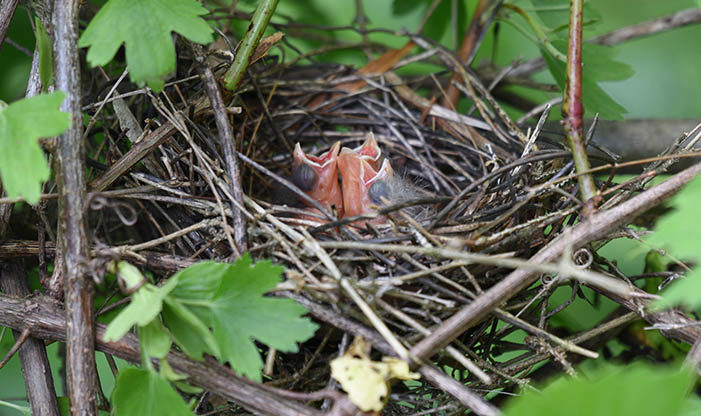In spring, you can witness the wonder of bird migration in Wisconsin. With the presence of so many birds, you may also see sick or injured birds in the wild. Though it may be in our nature to want to help a wild bird in need, it’s important to know the proper steps to take.
Migration and Window Strikes
Every year, up to a billion birds die from window collisions. During spring, migratory birds can be at a higher risk for these collisions. Glass windows can be disorienting to birds, as they often reflect trees, branches, or look passable. Fortunately, you can prevent window collisions by putting decals on large windows, windows near feeders, or on any that lie in a bird’s flight path. Place a group of these decals close enough together so they look like they are too narrow for a bird to fly through.
If you find a window strike victim and want to help, approach the bird slowly and quietly from behind and cover it with a cloth. Gently grasp the bird from behind, keeping its wings in close to its body, and carefully move the bird into a secure, well-ventilated cardboard box. Ensure that the box is closed securely and move it into a dark, quiet, warm place for the next hour, afterwards opening the box outdoors. If the bird flies away, it has recovered. If the bird does not fly away, call your local wildlife rehabilitator. You can find the rehabilitator licensed in your county in the wildlife rehabilitation directory at the Wisconsin Department of Natural Resources website.
Car Collisions
Another threat to larger birds are car collisions. If you happen to find an injured raptor on the side of the road, contact a wildlife rehabilitator so they can guide you on the next steps. Remember that wild animals view humans as large predators and their instinct is to defend themselves, even if you are trying to help.
Fledglings Versus Nestlings
Spring and summer are typical mating seasons for most bird species, a time when you may come across a young bird in need. A baby bird’s best chance of survival is with its mother. In most cases, baby birds are kept in their nest throughout the day while the parents search for food, and they will return to the nest to feed their young when it is safe.
Most young birds out of the nest are fledglings. A fledgling is a feathered young bird that is still learning how to fly. This bird has probably left the nest before it can fly and defend itself, but it is still being cared for by its parents and should be left alone. Although the bird may seem vulnerable, this is a necessary part of a bird’s development.
On the other hand, you may come across a nestling, a very young baby bird that is completely naked or only sparsely covered in down feathers. If you find a nestling on the ground, it will not survive for long. You can place an uninjured, warm baby bird back in their nest, just remain hidden and watch from a distance to ensure the parents return. The mother will not reject her young unless it is injured, sick, or has a birth defect.
When Birds Cannot Be Released
Sometimes birds cannot be rehabilitated and released back into the wild. This can happen when large species like raptors are injured. If a bird cannot be released into the wild but is still healthy enough to maintain a high quality of life, it may become an educational ambassador. Schlitz Audubon’s Raptor Program provides a permanent home for birds who have been brought into wildlife rehabilitation centers but have been deemed non-releasable.
Baron von Screech, the Eastern Screech Owl, was injured in a car collision. Wildlife rehabilitators found that damage to his right eye was severe, and the eye was removed for his health. Baron is now an educational ambassador and can be seen bobbing his head at Raptor Program events!


